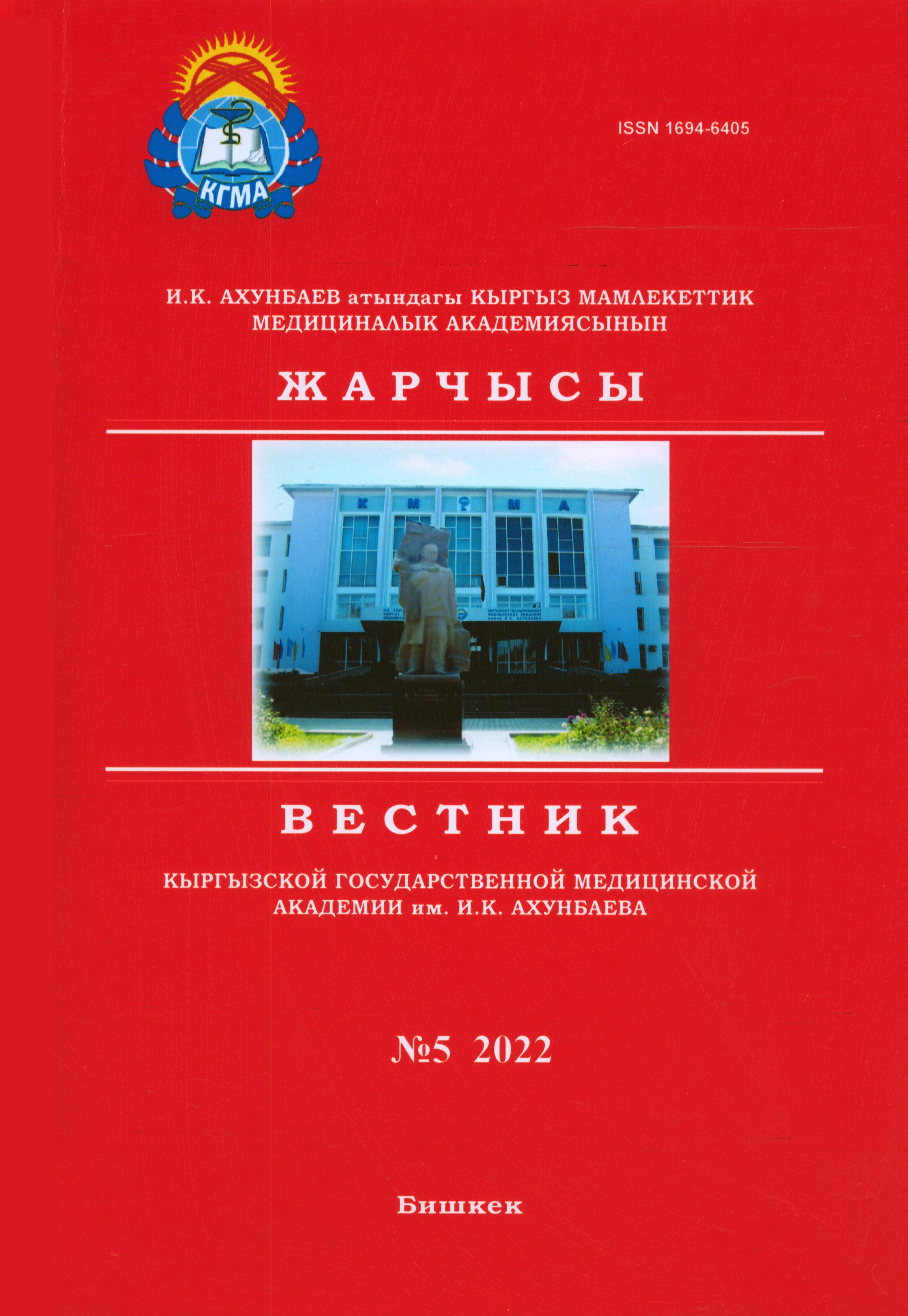RISK FACTORS OF REALIZATION AND CLINICAL AND LABORATORY FEATURES OF THE COURSE OF PROLONGED NEONATAL PATHOLOGICAL JAUNDICE IN PREMATURE NEWBORNS
DOI:
https://doi.org/10.54890/1694-6405_2022_5_96Abstract
Abstract. Pathological jaundice in newborns is the leading cause of neonatal morbidity and mortality. The purpose of our study was to identify and rank risk factors and clinical and laboratory features of the course of prolonged neonatal pathological jaundice in premature infants. The object of the study were newborns with pathological hyperbilirubinemia: premature newborns (198 children) and full-term newborns (205 children). The severity of the condition was assessed by the level of indirect hyperbilirubinemia, clinical manifestations and assessments on the Kramer, AVPU and Glasgow scales. It has been established that there are many evidently significant risk factors for the development of prolonged neonatal pathological hyperbilirubinemia, more pronounced in premature infants. Premature infants have an atypical clinical picture, a more severe prolonged course with high indirect hyperbilirubinemia (p<0.05).
Keywords:
premature infants, newborns, pathological hyperbilirubinemia, risk factors, AVPU scale, Glasgow com scale, bilirubin, blood parameters.References
1. Le Pichon JB, Riordan SM, Watchko J, Shapiro SM. Неврологический последствия гипербилирубинемии у новорожденных: определения, диагностика и лечение расстройств спектра межжелудочковой железы (KSDs). Curr Pediatr Rev 2017;13:199–209.
2. Helal NF, Ghany E, Abuelhamd WA, Alradem A. Characteristics and outcome of newborn admitted with acute bilirubin encephalopathy to a tertiary neonatal intensive care unit. World J Pediatr. 2019;15:42–8. https://doi.org/10.1007/s12519-018-0200-4
3. Diala UM, Wennberg RP, Abdulkadir I, Farouk ZL, Zabetta C, Omoyibo E. Patterns of acute bilirubin encephalopathy in Nigeria: a multicenter pre-intervention study. J Perinatol. 2018;38:873–80. . https://doi.org/10.1038/s41372-018-0094-y
4. Pace EJ, Brown CM, DeGeorge KC. Neonatal hyperbilirubinemia: an evidence-based approach. J Fam Pract. 2019;68:E4–11.
5. Cayabyab R, Ramanathan R. High unbound bilirubin for age: a neurotoxin with major effects on the developing brain. Pediatr Res. 2019;85(2):183–90. https://doi.org/10.1038/s41390-018-0224-4
6. Campbell Wagemann S, Mena Nannig P. Severe hyperbilirubinemia in newborns, risk factors and neurological outcomes. Rev Chil Pediatr 2019;90(3):267-74. https://doi.org/10.32641/rchped.v90i3.772
7. Zhang F, Chen L, Shang S, Jiang K. A Сinical prediction rule for acute bilirubin encephalopathy in neonates with extreme hyperbilirubinemia: a retrospective cohort study. Medicine. 2020;99(9):e19364. https://doi.org/10.1097/MD.0000000000019364
8. Cordero Ch, Laura A, Croen L, Engel SM, Siega-Riz AM, Herring A. Neonatal jaundice in association with autism spectrum disorder and developmental disorder. J Perinatol. 2020 February; 40(2):219–225. https://doi.org/10.1038/s41372-019-0452-4







